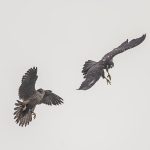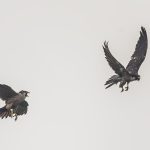The Peregrine Falcon (Falco peregrinus) a fearsome bird of prey that is reputed to be the fastest recorded bird in flight. When it swoops down to hunt for its prey which are normally other birds, the speed recorded is well in excess of 389 km/h.
In Singapore we have two subspecies, ennesti which is considered a resident subspecies in the region although rarely seen in Singapore itself, and japonensis which is the migratory subspecies that comes during the winter months, mainly from northeast Siberia to Kamchatka and Japan.
On a recent morning lookout at Kent Ridge Park before work, I was observing two squawking Tanimbar Corellas that suddenly flew around in circles. Thinking they were quarrelling, I took the opportunity to track one of them. As it flew around, another bird appeared suddenly. I sensed that it was not the Tanimbar. It was flying straight on at great speed and I immediately switched focus. As I acquired focus and clicked the shutter, it seems to have a confrontation with another bird and I thought one of the Tanimbar was a victim. It happened too fast, but I saw the bird barely escaping. In a split second the action was done and the two birds disappeared.
On checking the pictures, I realised that I had first seen an adult japonensis Peregrine Falcon with legs out that was intent to grab on to a juvenile Peregrine Falcon. The juvenile just has enough time to turn its body around facing the adult that was less than a metre away in mid-air. It somehow managed to manoeuvre itself away and behind the attacking adult and escaped unharmed.
The sighting of two Peregrine Falcons itself is not common, but the attack of one against another made my photographic day. Below is the sequence of events in photographic form with explanation of the scene.
Photo Gallery
- A fast flying adult with it’s feet coming out. The other bird is not visible yet.
- In a flash the adult has reached the juvenile Pergerine Falcon and its leg is fully out to grab. The juvenile is in the process of turning its body to meet the adult .
- At this stage, the adult has decelerated rapidly that the distance between it and the juvenile is just a bit closer.
- The juvenile has managed to manoeuvre itself to a more favourable position. The opportunity for attack by the adult is now diminished.
- The distance grow between the attacker and the intended victim.
- The juvenile is now getting back its balance for flight
- Show ended and they both flew off quickly.












